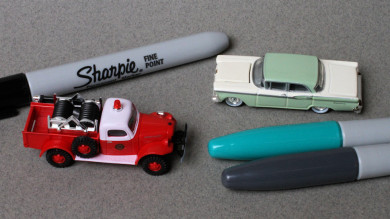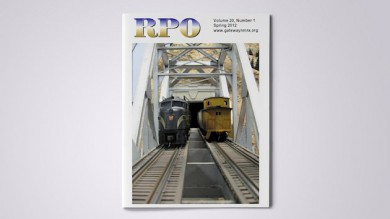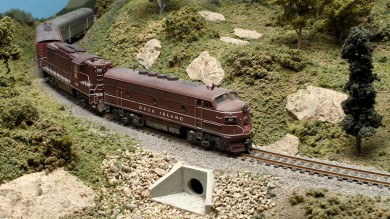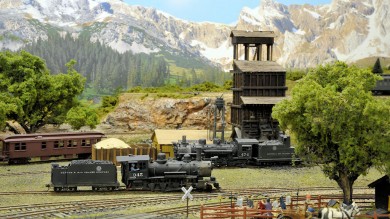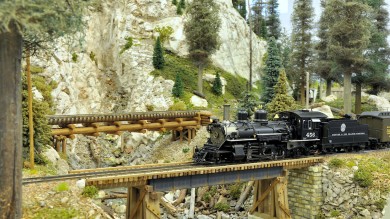Model Railroading Blog and News
Gluing Up Flat Sided Resin Kit Pieces
For gluing up flat sided resin kit side pieces use styrene cement and attach a 90 degree angle piece to one of the resin sides. The styrene glue will hold the angle top the resin side then line up the other side and do the same thing. The styrene glue will hold the pieces together so ...
Read MoreTricks for Tracks – Finishing Model Automobiles
When finishing a model automobile, Sharpies provide a translucent semi-gloss finish which nicely mimics the enamel paint used on prototype vehicles. When applied to paper used for awnings on buildings, Sharpies provide a flat water resistant color....
Read MoreA Brake for the Swamp Level Route
A hose level was used to create the level areas required for the layout - so I thought they were level. But my free-rolling car wheelsets found the minor variations in benchwork construction and decided to seek their own level. Nylon mono-filament fishing line to the rescue!...
Read MoreTricks for Tracks – Painting Wheels
An easy way to paint wheels is to use the Floquil markers. Hold the wheel and twist the marker around the wheel. Hold the marker at a slight angle to avoid painting the axle points....
Read MoreThe Spring 2012 Issue of The RPO is Now Available Online
The Spring 2012 quarterly members newsletter of the Gateway Division NMRA, the RPO, is now available online in PDF (Adobe Acrobat) format....
Read MoreApr 02, 2012
Comments are off
Bill Giese’s Beautiful Rock Island HO Model Railroad
Bill Giese's Des Moines Area Rock Island HO scale model railroad features highly detailed city and industrial scenes filled with cars, trucks and people. The railroad, set in the late 1960s to early 1970s, is a walk-in design with a 76-foot single track main and 24-foot branch line us...
Read MoreDon Taschner’s HO and HOn3 Scenic Model Railroad
Don's 1950s transition era HO/HOn3 8’x22’ layout features great award-winning scratchbuilt and kit based structures, wonderful running equipment, and dual gauge trackage. The layout has a 130-foot double track standard gauge mainline for steam and diesel operations with an eight track...
Read MoreSealing the Bottle
One of the most frustrating moments in model railroading is when you open an “almost” new bottle of paint and discover it is no longer usable. Happily, there is a simple, effective, and inexpensive way to save some dough and a lot of frustration....
Read MorePete Smith’s Loon Lake Railway & Navigation Co. Sn3 Model Railroad
Experience logging, mining and waterfront operations in Sn3 on this 28’x20’ layout. DC cabs with Soundtraxx controls. Shays and Heislers crawling on code 55 and 70 rail on the loop-to-loop 125-foot mainline....
Read MoreCopyright © 2025 Gateway Division NMRA. All rights reserved. | Website Info | Legal Notices

